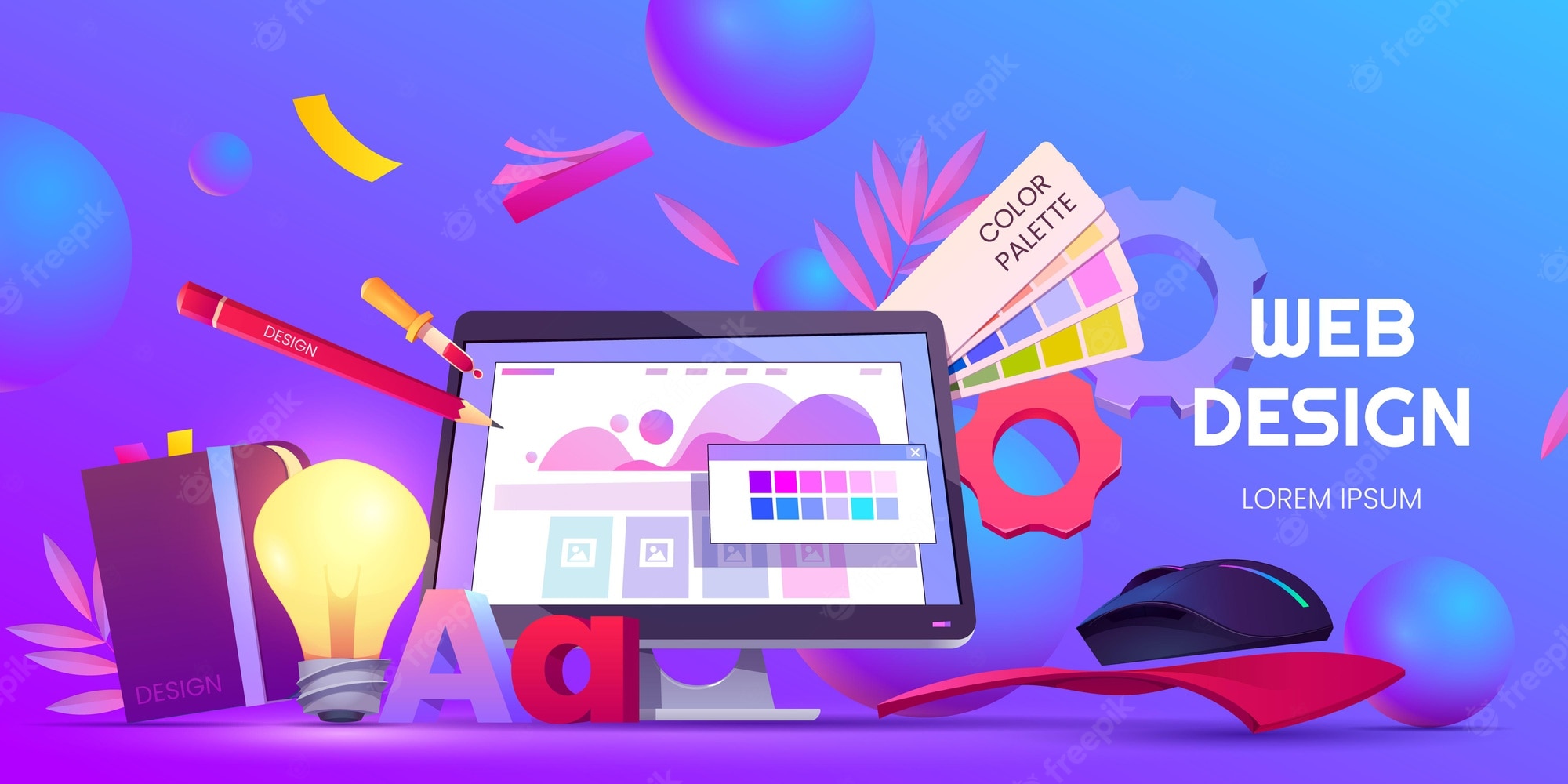How a Web Design Agency uses SEO strategies to boost online visibility
Discovering Imaginative Fads in Web Design for Modern Companies
The landscape of web design is continually developing, mirroring the dynamic needs of contemporary companies. Recent trends highlight a preference for minimalism, bold typography, and engaging interactivity. Companies significantly focus on user experience with mobile-first concepts and individualized material. In addition, a focus on sustainability is acquiring traction. Understanding these trends is necessary for companies intending to stand out in a congested marketplace. What ramifications do these changes hold for the future of electronic interaction?
Welcoming Strong Typography
Vibrant typography has become a specifying component in contemporary web design, catching interest and conveying messages with striking quality. This pattern prioritizes visually impactful message that boosts user interaction and brand name identity. Developers frequently make use of oversized typefaces and one-of-a-kind fonts to develop a hierarchy, guiding audiences through web content flawlessly.
The strategic use strong typography permits reliable narration, enabling brand names to interact their worths succinctly. It serves not just visual functions but likewise functional ones, as it enhances readability across devices and display sizes.
As internet sites contend for user focus, strong typography sticks out in a saturated electronic landscape. Its adaptability enables developers to experiment with contrasting layouts and shades, further magnifying its effectiveness. Eventually, welcoming vibrant typography stands for a shift in the direction of more communicative and expressive web design, promoting a deeper connection in between brand names and their audiences.
The Rise of Minimalist Layout
As digital settings become increasingly chaotic, the surge of minimalist style provides a renewing option that prioritizes simpleness and performance. This style approach strips away unneeded components, enabling web content to take spotlight. By concentrating on tidy lines, sufficient white room, and a limited color combination, minimal layout boosts user experience and boosts navigating.
Services embracing this fad objective to convey their brand name message plainly and efficiently, fostering a sense of calm and clarity. The lack of disturbances aids customers concentrate on crucial details, resulting in boosted engagement and conversion prices. Furthermore, minimalist design straightens well with mobile-first techniques, guaranteeing that websites stay user-friendly and easily accessible throughout different gadgets.
Ultimately, the rise of minimal design reflects a wider change towards focusing on user needs and preferences, making it an effective device for modern-day businesses seeking to make a long-term impact in the digital landscape.
Immersive Animations and Interactivity
While many internet designers welcome minimal looks, one more compelling trend obtaining traction is making use of immersive computer animations and interactivity. This strategy enhances user involvement by creating appealing experiences that attract site visitors into the content. Designers use dynamic elements such as animated histories, scrolling results, and interactive infographics to communicate complex ideas in an available way.
These animations not only give visual interest yet also overview customers with the navigation process, making interactions a lot more intuitive. For instance, float results and computer animated shifts can encourage individuals to discover even more, causing increased time invested in the site.
This trend aligns with the wider activity in the direction of narration in internet style, where computer animations serve as narrative devices that share brand messages effectively. By incorporating immersive animations and interactivity, companies can differentiate themselves in a crowded online landscape, eventually boosting user complete satisfaction and brand name commitment.
Mobile-First Style Concepts
Mobile-first layout concepts stress focusing on user experience by making sure web sites operate flawlessly on smaller sized displays. This approach incorporates receptive layout techniques that adapt to numerous device sizes while keeping aesthetic stability. Furthermore, it concentrates on touchscreen navigation style, enhancing functionality for mobile individuals.
Focusing On User Experience
Exactly how can developers properly focus on user experience in a progressively mobile-centric globe? Highlighting mobile-first layout concepts is crucial, as individuals primarily involve with sites via smart phones. This strategy urges designers to enhance web content, guaranteeing it is accessible and easily accessible on smaller sized displays. Key methods consist of simplifying navigation, decreasing tons times, and using touch-friendly components that enhance interactivity. Additionally, focusing on understandable typography and user-friendly designs can significantly boost user fulfillment. Designers ought to continually gather user comments to refine their methods, adapting to evolving user needs and choices. By concentrating on these components, businesses can produce an engaging digital experience that fosters loyalty and drives conversions, inevitably aligning with the expectations these days's mobile users.
Receptive Layout Strategies
Designers accept receptive format strategies to develop flexible and flexible web experiences that satisfy various screen sizes. This approach prioritizes mobile-first design principles, making sure peak capability on smaller sized devices before scaling up for bigger displays. By making use of liquid grids, flexible photos, and media queries, designers can preserve a natural aesthetic identity throughout all platforms. This technique not only enhances user interaction but additionally improves online search engine positions, as mobile-friendly sites are preferred by search formulas. Furthermore, responsive layouts permit organizations to get to a more comprehensive target market, suiting individuals on desktops, mobile phones, and tablet computers alike. In general, implementing these techniques is crucial for modern-day web design, making certain that organizations stay affordable in an ever-evolving web design company electronic landscape.
Touchscreen Navigating Design
With the increase of smart phones, touchscreen navigating has actually come to be an essential element of web design. Developers are progressively taking on mobile-first principles to improve user experience and engagement. agency for web design. Effective touchscreen navigating focuses on larger switches and user-friendly motions, enabling users to connect conveniently with material. This technique lowers frustration and motivates exploration, as users can navigate perfectly with their fingers. Furthermore, integrating swipe gestures and tap performance provides to the natural actions of mobile customers. Responses mechanisms, such as aesthetic signs and computer animations, boost usability further by confirming activities. As touchscreens dominate user communications, utilizing these layout elements not only lines up with modern assumptions however likewise cultivates a much more easily accessible and delightful searching experience for all customers
Personalized User Experiences
What makes an individual really feel absolutely engaged on a site? The answer frequently depends on personalized user experiences. By customizing content and navigating to individual preferences, businesses can produce a purposeful link with their target market. This personalization can be achieved with numerous approaches, such as assessing user actions, using cookies, and supplying personalized suggestions based upon previous communications.
For example, ecommerce platforms that suggest items based on searching background not just enhance user experience yet also boost conversion rates. Including dynamic material that adapts to the user's location or time of day can further enhance interaction.
Furthermore, personalized introductions or messages can make customers really feel valued and understood. As modern-day organizations strive to attract attention in an affordable digital landscape, embracing individualized user experiences ends up being crucial, fostering commitment and encouraging repeat sees. Eventually, this method transforms a conventional web site into an interactive system that resonates with its audience.
Sustainability in Web Design
As the digital landscape proceeds to evolve, the relevance of sustainability in web design has obtained considerable attention. Designers are progressively familiar with the environmental impact their creations can have, prompting a shift towards green techniques (web design company). Sustainable web design concentrates on maximizing sites to minimize power usage and carbon footprints. Strategies consist of making use of minimalistic style principles, optimizing photos, and utilizing reliable coding practices to improve loading rates
The option of organizing companies plays a crucial duty; several designers are now choosing for eco-friendly organizing services powered by renewable energy. By focusing on access and user-friendly navigation, sustainable styles additionally cater to a broader audience, boosting use. This conscious method not just allures to environmentally-minded customers yet additionally adds to the total long life and effectiveness of web sites. Eventually, sustainability in web design reflects an expanding pattern in the direction of accountable digital practices that align with modern business values.

Often Asked Inquiries
Exactly How Can I Choose the Right Color Pattern for My Website?
To select the best color pattern for a site, one should think about the brand name's identification, target market, and emotional impact. Making use of shade theory and testing combinations can enhance user experience and aesthetic allure considerably.
What Are the Best Tools for Prototyping Internet Designs?
The very best tools for prototyping website design include Figma, Sketch, Adobe XD, and InVision. These systems supply instinctive user interfaces, partnership functions, and comprehensive collections, making them perfect for developers to create and fine-tune their ideas successfully.
Just how Do I Gauge the Efficiency of My Web Design?
To gauge web design effectiveness, one must assess user engagement metrics, conversion rates, and use comments (Web Design services). A/B testing and heatmaps can likewise offer insights right into user actions, directing essential adjustments for enhanced performance and user experience
What Prevail Web Design Blunders to Avoid?
Common web design errors consist of cluttered layouts, inadequate navigation, slow-moving filling times, lack of mobile optimization, poor contrast, and neglecting user comments. Staying clear of these pitfalls boosts user experience and raises overall performance of the internet site.
Exactly how Often Should I Update My Internet Site Layout?
A web site style ought to be upgraded every a couple of years, or faster if significant modifications in branding or innovation happen. Routine updates keep the website fresh, useful, and aligned with existing user expectations.
